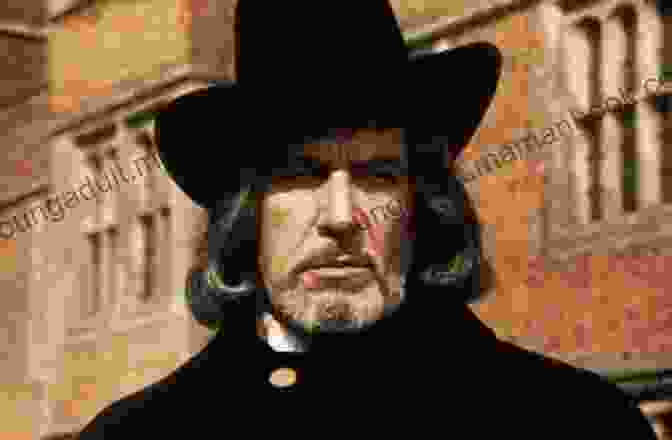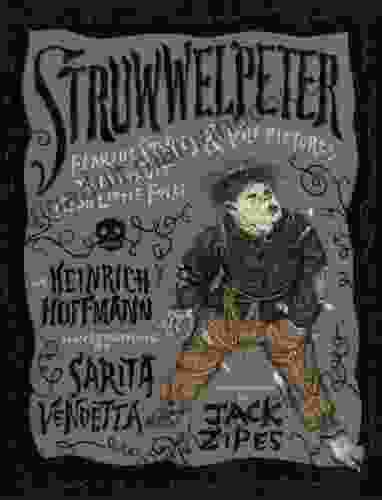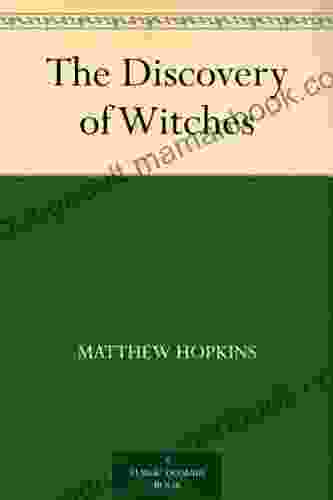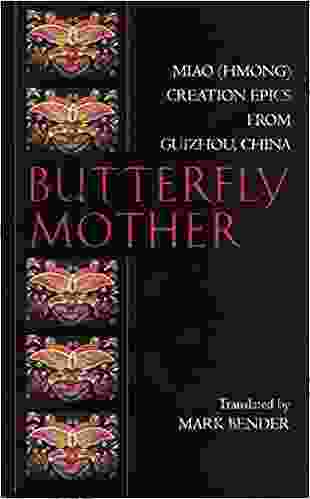The Discovery of Witches: The True Story of Matthew Hopkins, the Witchfinder General


In the annals of English history, the name Matthew Hopkins evokes both fascination and horror. As the self-appointed "Witchfinder General" during the English Civil War, Hopkins was responsible for the deaths of hundreds of innocent women and men accused of witchcraft. His methods were brutal and his accusations often unfounded, yet he managed to spread fear and paranoia throughout the country.
The story of Matthew Hopkins is a complex one, involving religious zealotry, political opportunism, and the darkest aspects of human nature. In this article, we will delve into the life and career of this infamous figure, exploring the events that led to his rise to power and the tragic consequences of his actions.
4 out of 5
| Language | : | English |
| File size | : | 156 KB |
| Text-to-Speech | : | Enabled |
| Screen Reader | : | Supported |
| Enhanced typesetting | : | Enabled |
| Print length | : | 38 pages |
| Lending | : | Enabled |
Early Life and Influences
Matthew Hopkins was born in Great Wenham, Suffolk, England, in 1620. His father was a Puritan minister, and Hopkins received a strict religious upbringing. He studied law but never practiced, and instead turned to farming as his main occupation.
Hopkins's religious beliefs played a major role in his later career as a witchfinder. He was a fervent believer in the Bible and saw witchcraft as a grave sin that threatened the very fabric of society. He was also influenced by the writings of Reginald Scot, a 16th-century author who argued against the existence of witches. Hopkins, however, interpreted Scot's work as proof that witches were real and that they needed to be eradicated.
The Outbreak of the English Civil War
In 1642, the English Civil War broke out between the Royalists, led by King Charles I, and the Parliamentarians, led by Oliver Cromwell. The war caused widespread chaos and upheaval, and it was during this time that Hopkins first emerged as a witchfinder.
In 1644, Hopkins and his associate, John Stearne, began traveling the country, accusing women of witchcraft. They claimed to have a special ability to detect witches, and they used a variety of tortures and other methods to extract confessions from their victims.
Hopkins's methods were brutal and often led to the deaths of the accused. He would often strip his victims naked and shave their heads, searching for any marks or blemishes that he believed were signs of witchcraft. He would also subject them to sleep deprivation, starvation, and other forms of torture.
The Witch Hunts
Hopkins's witch hunts quickly gained notoriety, and he soon became one of the most feared men in England. He traveled from town to town, setting up courts and accusing women of witchcraft. He was responsible for the deaths of hundreds of people, most of whom were women.
Hopkins's accusations were often based on nothing more than hearsay or superstition. He would often target women who were seen as different or unconventional, such as healers, midwives, and unmarried women. He also accused people who had simply fallen out of favor with their neighbors or who had been accused of other crimes.
Hopkins's witch hunts caused widespread fear and paranoia. People were afraid to speak out against him, lest they be accused of witchcraft themselves. As a result, many innocent people were wrongly accused and executed.
The Decline and Fall
Hopkins's reign of terror eventually came to an end. In 1647, he was arrested and charged with murder. He was found guilty and executed in Chelmsford, Essex, on August 12, 1647.
Hopkins's death did not end the witch hunts in England. They continued for several more years, but they gradually declined in intensity. By the end of the 17th century, the witch hunts had largely ended, and the era of Matthew Hopkins had come to an end.
Legacy
Matthew Hopkins remains one of the most infamous figures in English history. His witch hunts were a dark chapter in English history, and they left a lasting legacy of fear and superstition. Hopkins's name is synonymous with the horrors of the witch hunts, and he serves as a reminder of the dangers of religious zealotry and mob mentality.
In recent years, there has been renewed interest in Hopkins and the witch hunts. Several books and documentaries have been produced that explore his life and career. These works have helped to shed light on this dark period in English history and to remind us of the importance of protecting the innocent from persecution.
Matthew Hopkins was a complex and controversial figure. He was a religious fanatic who believed that he was ng God's work by hunting and killing witches. However, his methods were brutal and his accusations were often unfounded. He was responsible for the deaths of hundreds of innocent people, and his legacy continues to haunt us today.
The story of Matthew Hopkins is a cautionary tale about the dangers of religious zealotry and the importance of protecting the innocent from persecution. It is a story that we must never forget.
4 out of 5
| Language | : | English |
| File size | : | 156 KB |
| Text-to-Speech | : | Enabled |
| Screen Reader | : | Supported |
| Enhanced typesetting | : | Enabled |
| Print length | : | 38 pages |
| Lending | : | Enabled |
Do you want to contribute by writing guest posts on this blog?
Please contact us and send us a resume of previous articles that you have written.
 Top Book
Top Book Novel
Novel Fiction
Fiction Nonfiction
Nonfiction Literature
Literature Paperback
Paperback Hardcover
Hardcover E-book
E-book Audiobook
Audiobook Bestseller
Bestseller Classic
Classic Mystery
Mystery Thriller
Thriller Romance
Romance Fantasy
Fantasy Science Fiction
Science Fiction Biography
Biography Memoir
Memoir Autobiography
Autobiography Poetry
Poetry Drama
Drama Historical Fiction
Historical Fiction Self-help
Self-help Young Adult
Young Adult Childrens Books
Childrens Books Graphic Novel
Graphic Novel Anthology
Anthology Series
Series Encyclopedia
Encyclopedia Reference
Reference Guidebook
Guidebook Textbook
Textbook Workbook
Workbook Journal
Journal Diary
Diary Manuscript
Manuscript Folio
Folio Pulp Fiction
Pulp Fiction Short Stories
Short Stories Fairy Tales
Fairy Tales Fables
Fables Mythology
Mythology Philosophy
Philosophy Religion
Religion Spirituality
Spirituality Essays
Essays Critique
Critique Commentary
Commentary Glossary
Glossary Bibliography
Bibliography Index
Index Table of Contents
Table of Contents Preface
Preface Introduction
Introduction Foreword
Foreword Afterword
Afterword Appendices
Appendices Annotations
Annotations Footnotes
Footnotes Epilogue
Epilogue Prologue
Prologue Allen Pud Deters
Allen Pud Deters Suzanne Scarrett
Suzanne Scarrett Heather E Schwartz
Heather E Schwartz Bhavesh Ranipa
Bhavesh Ranipa Trilussa
Trilussa Mark Minard
Mark Minard Robert Forrant
Robert Forrant Sophocles
Sophocles Walter Jon Williams
Walter Jon Williams Jody Houser
Jody Houser Elmore Rounbottom
Elmore Rounbottom Diana Rosado
Diana Rosado Kathi Linz
Kathi Linz Deia Klein
Deia Klein Jeff Jarvis
Jeff Jarvis Marc Plinke
Marc Plinke Fabio Maiano
Fabio Maiano Ennki Hakari
Ennki Hakari Geraldine Moorkens Byrne
Geraldine Moorkens Byrne Judith Kolberg
Judith Kolberg
Light bulbAdvertise smarter! Our strategic ad space ensures maximum exposure. Reserve your spot today!

 Henry JamesSkeleton Knight in Another World Light Novel Vol. 1: A Necromantic Adventure...
Henry JamesSkeleton Knight in Another World Light Novel Vol. 1: A Necromantic Adventure... Brent FosterFollow ·4.5k
Brent FosterFollow ·4.5k Tony CarterFollow ·8.6k
Tony CarterFollow ·8.6k Beau CarterFollow ·6.3k
Beau CarterFollow ·6.3k Zachary CoxFollow ·9.8k
Zachary CoxFollow ·9.8k Albert CamusFollow ·11.7k
Albert CamusFollow ·11.7k Gabriel BlairFollow ·19k
Gabriel BlairFollow ·19k Duane KellyFollow ·11.2k
Duane KellyFollow ·11.2k Colin RichardsonFollow ·13.3k
Colin RichardsonFollow ·13.3k

 Yukio Mishima
Yukio MishimaUnveiling the Zimmermann Telegram: A Pivotal Document in...
The Zimmermann Telegram, a diplomatic...

 George Martin
George MartinFearful Stories and Vile Pictures to Instruct Good Little...
In the annals of children's literature, few...

 Grant Hayes
Grant HayesJessica the Viscount Wallflower: A Tale of Transformation...
In the opulent ballrooms and glittering...

 Jerome Blair
Jerome BlairThe Economics of the Global Defence Industry: A...
The global...

 Blake Kennedy
Blake KennedyBreath of Heron - A Window into the Poetic Depths of...
In the realm of...
4 out of 5
| Language | : | English |
| File size | : | 156 KB |
| Text-to-Speech | : | Enabled |
| Screen Reader | : | Supported |
| Enhanced typesetting | : | Enabled |
| Print length | : | 38 pages |
| Lending | : | Enabled |











